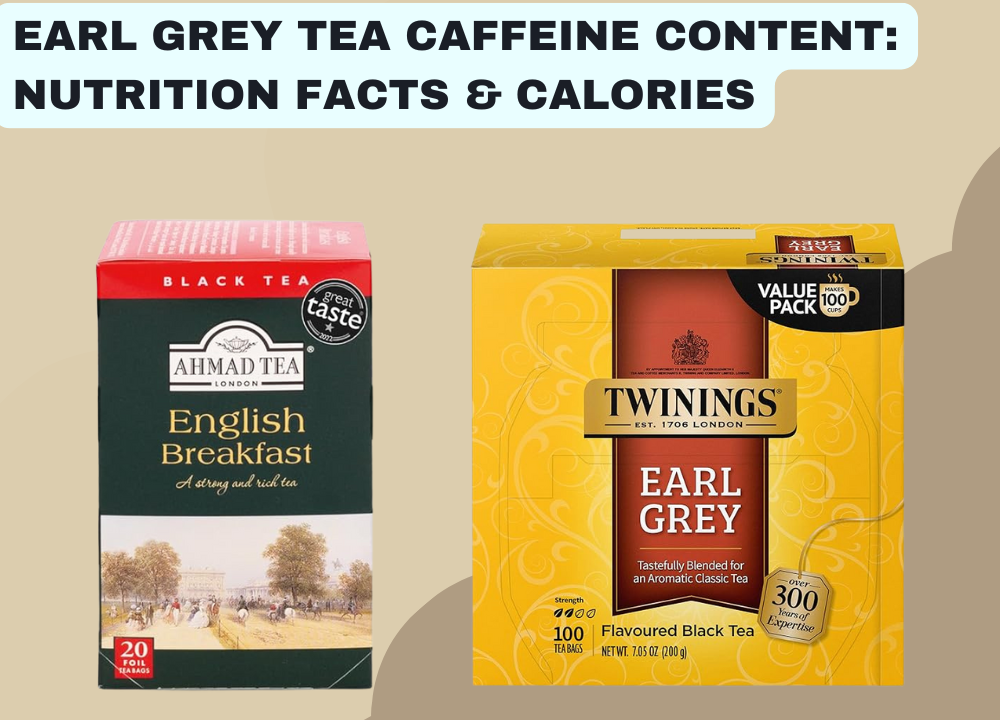Understanding the caffeine levels in Earl Grey tea is important for tea lovers. Alongside caffeine, Earl Grey tea offers various nutrition facts and calorie information that can help you make informed choices.
This tea, made with black tea and bergamot oil, can fit into different diets and lifestyles. Let’s explore what makes Earl Grey tea both delightful and nutritious.
What Is Earl Grey Tea?
It is a black tea blend infused with bergamot oil, originating in 19th-century England. Many enjoy this tea not only for its taste but also for its potential health benefits.
Origin And History
Earl Grey tea has a rich history that dates back to the early 19th century. It is named after Charles Grey, the 2nd Earl Grey, who served as Prime Minister of the United Kingdom. The story goes that he received a gift of tea flavored with bergamot oil.
Here are some key points about its origin:
- Charles Grey was a significant political figure.
- The tea became popular among the British aristocracy.
- Many variations of Earl Grey have emerged since its inception.
Today, Earl Grey is enjoyed worldwide. Different brands and regions have their own unique twists on this classic tea.
What Does Earl Grey Tea Taste Like? A Flavor Profile
The flavor of Earl Grey tea is distinctive. It combines the robust taste of black tea with the refreshing notes of bergamot oil. This creates a blend that is both citrusy and floral.
Here are some key taste elements:
- Citrusy: The bergamot gives a bright, zesty flavor.
- Floral: The aroma is often described as fragrant.
- Malty: The black tea base adds a rich depth.
People enjoy Earl Grey in various ways:
- Hot with milk.
- Iced for a refreshing drink.
- With a slice of lemon for extra zest.
Is Earl Grey Tea Healthy? Potential Benefits
Earl Grey tea offers several health benefits. It is rich in antioxidants, which help fight free radicals in the body. These antioxidants can contribute to overall wellness.
Here are some potential benefits:
- Supports heart health: The flavonoids in tea may lower blood pressure.
- Aids digestion: Bergamot may help with digestive issues.
- Boosts energy levels: The caffeine content can provide a gentle lift.
The caffeine content in Earl Grey tea is moderate. A typical cup contains about 40-70 mg of caffeine. This makes it a good option for those who enjoy tea but want to limit caffeine intake compared to coffee.
Caffeine Content In Earl Grey Tea
A key component that many tea lovers consider is caffeine content. Understanding the caffeine levels in Earl Grey can help you choose the right drink for your needs.
Earl Grey Tea Caffeine Vs. Coffee Caffeine
Many people enjoy Earl Grey tea for its soothing qualities. But how does its caffeine stack up against coffee? Here are some key points:
- Coffee has about 63 mg of caffeine per cup.
- Earl Grey tea averages 40-60 mg of caffeine per cup.
- This means coffee has significantly more caffeine than Earl Grey.
Here’s a quick comparison:
| Beverage | Caffeine Content (mg) |
|---|---|
| Coffee (1 shot of espresso) | 63 |
| Earl Grey Tea | 40-60 |
This lower caffeine content makes Earl Grey a gentler option. It’s perfect for those who want a mild boost without jitters. Many prefer tea for its calming effect, making it a great choice throughout the day.
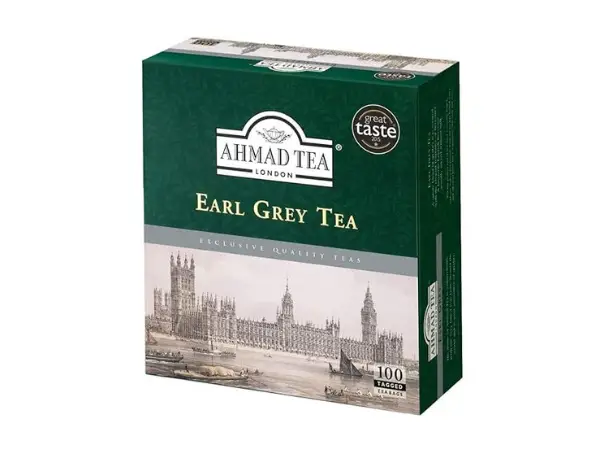
Ahmad Tea Earl Grey: Caffeine Analysis
Ahmad Tea’s Earl Grey offers a delightful experience. The caffeine content in Ahmad Tea Earl Grey is around 40-50 mg per cup. This level provides a balanced energy boost. It’s ideal for starting your day or enjoying in the afternoon.
Here are some important points about Ahmad Tea Earl Grey:
- Steeping time affects caffeine levels.
- Longer steeping increases caffeine extraction.
- This tea has a smooth flavor with a hint of bergamot.
Ahmad Tea uses high-quality black tea leaves. This enhances both flavor and caffeine content. It’s a popular choice for those seeking a flavorful yet moderate caffeine drink.
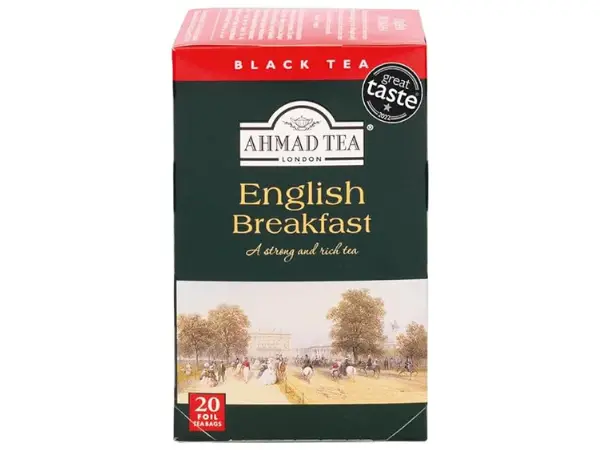
Tazo Earl Grey Tea: Caffeine Levels
Tazo Earl Grey Tea is known for its rich flavor. The caffeine content in Tazo typically ranges between 40-50 mg per cup. This makes it slightly stronger than some other Earl Grey options.
Key highlights of Tazo Earl Grey include:
- Bold bergamot flavor.
- Great hot or iced.
- Perfect for a mid-day pick-me-up.
With a higher caffeine range, Tazo can provide an extra boost. It’s suitable for those who enjoy a more robust tea experience without the full punch of coffee.
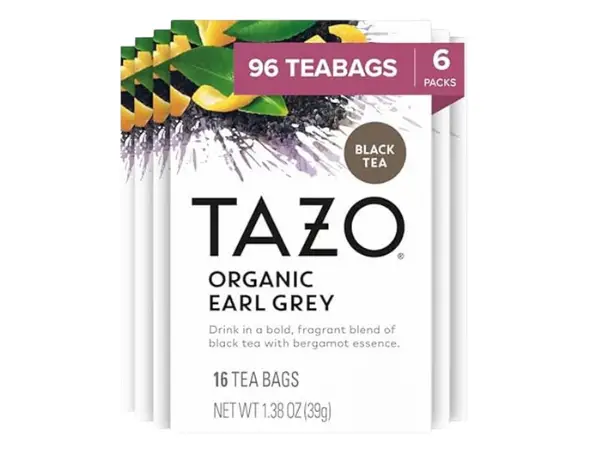
Twinings Earl Grey Tea: Caffeine Amount
Twinings Earl Grey Tea is a classic choice for many. It has about 25-65 mg of caffeine per serving. This range allows for flexibility depending on steeping time and tea type.
Here are some features of Twinings Earl Grey:
- Light and fragrant with bergamot.
- Available in various formats, including bags and loose leaf.
- Good for both morning and evening enjoyment.
The wide caffeine range makes Twinings adaptable. Whether you prefer a stronger cup or a milder one, this tea can meet your preferences. It’s a staple in many households for its comforting qualities.
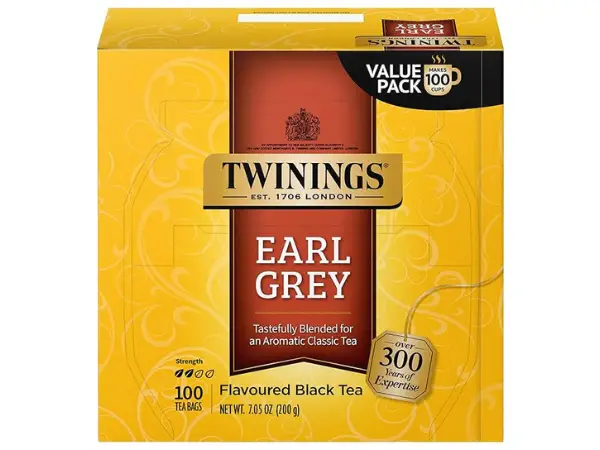
Earl Grey Tea: Nutritional Breakdown
This section explores Earl Grey tea nutrition facts, and calories. It also dives into its ingredients and popular variations.
Earl Grey Tea Nutrition Facts
Earl Grey tea is primarily made from black tea and flavored with bergamot oil. This combination creates a drink rich in flavor and beneficial compounds. Here are some key nutrition facts:
| Nutrient | Amount per 8 oz (240 ml) |
|---|---|
| Caffeine | 40-70 mg |
| Flavonoids | Varies |
| Antioxidants | High |
Here are some important points about Earl Grey tea:
- Zero calories when plain: Unsweetened tea has no calories.
- Contains flavonoids and antioxidants: These compounds support health.
- 0 calories when brewed without additives: Ideal for calorie-conscious drinkers.
- Black tea base: Provides a robust flavor and health benefits.
The presence of caffeine makes it a suitable choice for those needing a gentle energy boost. The exact caffeine content varies based on the brewing time and tea brand.
Calories In Earl Grey Tea
Earl Grey tea is low in calories, making it a healthy choice. When enjoyed plain, it has zero calories. However, adding milk or sugar changes its calorie count significantly.
For example:
- Plain Earl Grey tea: 0 calories
- With 1 teaspoon of sugar: 16 calories
- With 1 ounce of whole milk: 20 calories
This makes it easy to enjoy without worrying about calorie intake. If you prefer flavored teas, consider herbal or fruit blends. They may contain more calories.
Always check the ingredients if you’re buying pre-packaged Earl Grey. Some brands add sweeteners or flavors that increase calorie content. Reading labels helps you choose wisely.
What Is In Earl Grey Tea? Ingredients And Variations
Earl Grey tea’s main components are black tea and bergamot oil. This oil is extracted from the rind of bergamot oranges. The flavor is distinct and aromatic. Here are common ingredients in Earl Grey tea:
- Black tea: The base tea used in traditional blends.
- Bergamot oil: Provides the unique citrus flavor.
Variations of Earl Grey tea exist. Some include:
- Green Earl Grey: Uses green tea instead of black.
- Rooibos Earl Grey: A caffeine-free option made with rooibos.
- Lavender Earl Grey: Infused with lavender for a floral twist.
These variations offer different flavor profiles and benefits. Experimenting with different types can enhance your tea experience.
Earl Grey Tea: Caffeine And Health Considerations
The caffeine levels can impact your health positively or negatively. Knowing how much caffeine is in Earl Grey tea and its effects helps you enjoy it wisely.
Factors Affecting Caffeine Levels In Earl Grey
The caffeine content in Earl Grey tea varies. Several factors contribute to this variation:
- Brewing time: Longer brewing times increase caffeine extraction.
- Tea variety: Different black tea types can have different caffeine levels.
- Serving size: Larger servings contain more caffeine.
Here’s a table showing approximate caffeine levels in different types of Earl Grey tea:
| Type of Earl Grey | Caffeine Content (mg per 8 oz) |
|---|---|
| Traditional Black Earl Grey | 40-70 |
| Decaffeinated Earl Grey | 2-10 |
| Green Earl Grey | 30-50 |
Brewing time, tea variety, and serving size play a significant role in the caffeine levels of Earl Grey tea. Understanding these factors helps you make informed choices about your tea consumption.
Potential Effects Of Earl Grey Tea Caffeine
The caffeine in Earl Grey tea can have various effects on the body. For many, it can:
- Boost energy: Caffeine stimulates the central nervous system.
- Improve focus: It enhances alertness and concentration.
However, caffeine can also have downsides:
- May cause jitters in sensitive individuals.
- Can disrupt sleep if consumed late in the day.
Understanding how caffeine affects you is crucial. People react differently to caffeine. Some may feel energized, while others may experience anxiety or restlessness. It is essential to pay attention to how your body responds after drinking Earl Grey tea.
Recommendations For Earl Grey Tea Consumption
Moderation is key when enjoying Earl Grey tea. Here are some tips for consumption:
- Best consumed in moderation; limit intake if sensitive to caffeine.
- Monitor how much caffeine you consume throughout the day.
- Consider your brewing time; shorter times reduce caffeine levels.
For those sensitive to caffeine, opt for decaffeinated Earl Grey. This version provides flavor without the jitters. Drinking Earl Grey tea in the morning or early afternoon is wise. This timing helps avoid sleep disturbances.

